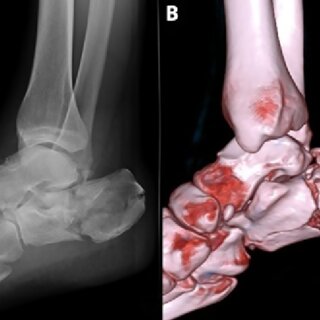Tips for Choosing Between Ankle Replacement and Ankle Fusion

Ankle pain and mobility issues can significantly impact daily life. For those experiencing severe ankle injuries, surgical interventions such as ankle replacement or ankle fusion may be recommended. Both procedures address pain relief and can restore functionality to the affected ankle, but each comes with its own nuances.
Understanding Ankle Replacement
Ankle replacement involves replacing the damaged parts of the ankle joint with artificial components. This surgery aims to replicate the natural motion of the ankle and alleviate the discomfort caused by damaged cartilage or bone. Key features of this procedure include:
- Preservation of Movement: One of the primary appeals of replacement is that it retains the ankle joint’s range of motion. This can result in more natural, fluid movements compared to alternatives that immobilize the joint.
- Materials Used: Replacements commonly involve a combination of metal components for durability and plastic for smooth articulation. These materials are designed to mimic the function of a healthy joint.
- Recovery Period: Post-surgery recovery often involves physical therapy to help regain strength and flexibility in the ankle. While the timeframe may differ depending on individual factors, rehabilitation typically lasts several months.
Patients with less demanding lifestyles or specific patterns of arthritis may be candidates for ankle replacement. It is generally suggested for those wanting to maintain joint flexibility. An orthopedic specialist would assess factors such as age, activity levels, and overall joint health before suggesting this option.
Exploring Ankle Fusion
Ankle fusion, also known as arthrodesis, is a surgical procedure where the bones in the ankle joint are permanently joined together. This eliminates movement in the joint but stabilizes it to reduce pain and improve weight-bearing capabilities. Notable factors around ankle fusion include:
- Stabilization of the Joint: By permanently fusing the bones, this procedure provides a stable platform for weight-bearing activities.
- Long-Term Durability: The fused joint can often handle greater physical demands, making it a potential option for individuals with active lifestyles.
- Recovery Period: Similar to a replacement, recovery involves a significant period of rest and rehabilitation.
Comparing the Two
Ankle replacement tends to preserve the natural motion of the joint. This may be appealing for individuals looking to maintain flexibility during daily activities. Ankle fusion sacrifices flexibility for enhanced stability, which can be beneficial in preventing further joint degeneration. Both procedures involve significant recovery and rehabilitation, though the required adjustments in lifestyle differ. Ankle replacement typically involves dedicated physical therapy to regain motion, while ankle fusion patients may need to adapt to changes in mobility due to the fixed joint. Several factors, such as age, overall health, lifestyle, and the severity of the condition, play a role in determining the appropriate procedure. Consulting with an orthopedic specialist helps align recommendations with the patient’s specific circumstances.
Speak to an Orthopedic Specialist
Choosing between ankle replacement and ankle fusion involves careful exploration of various factors that are unique to each individual. Both procedures aim to improve quality of life and reduce joint-related discomfort, but the outcomes and experiences are different. Discussing your condition, activity level, and expectations with an orthopedic specialist can help create a personalized treatment plan that aligns with your goals. Seeking professional guidance makes sure that you are equipped to make an informed decision about your health and mobility needs.
- What to Expect When Visiting a Foot and Ankle Specialist
- Causes of PTSD
- The Link Between Plantar Fasciitis and Weight Gain: What You Need to Know
- How Pet Ownership Can Positively Impact Life with Fibromyalgia
- The Importance of Stretching and Flexibility in Sports Medicine
Dr. Emma Green is a health and wellness expert with over 10 years of experience in nutrition and fitness. Passionate about helping others live their healthiest lives, Dr. Green shares practical advice on wellness, nutrition, and sustainable living through LivingSpristine.






